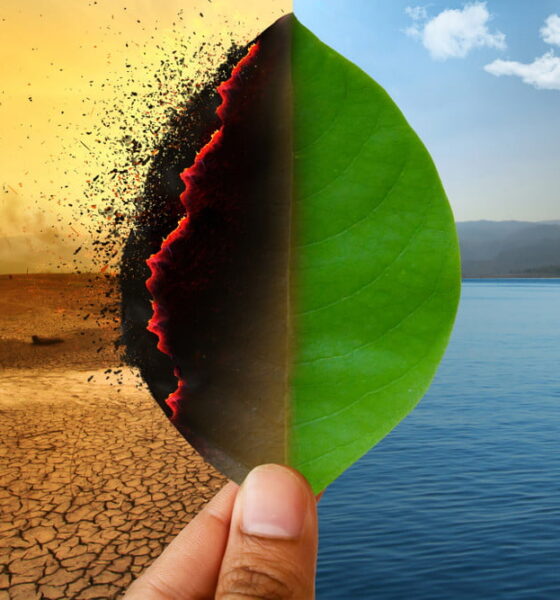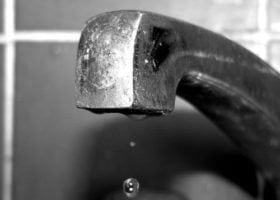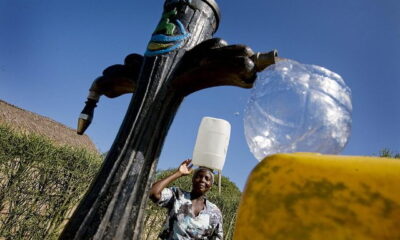

Environment
Leak Detection Is Essential To The Looming Water Crisis
The entire world is facing a terrifying water crisis. One study published on ScienceAlert shows that 25% of the world population doesn’t have access to reliable water.
You may think that the United States is immune to this crisis. Unfortunately, global warming is taking its toll on our own water supply. Global warming and our water wasting habits are going to contribute to a water shortage in the near future.
We need to take immediate action. This includes avoiding wasting water by identifying leaks in our piping systems.
Leak Detection is Vital to Preserving Our Dwindling Water Supply
A water leak can be an unwelcome discovery that often bears serious and expensive consequences. To a surprising number of people, however, a leaking faucet or a hairline crack in a water pipe doesn’t cause alarm, particularly if the bulk of the problem is hidden behind a wall or beneath the ground.
There are many types of damages that water system failures can create. Therefore, water leak detection is essential for home and building maintenance. We want to address some of the questions surrounding water leak detection and help those unfamiliar with the process to understand how important it can be.
How does this tie into the water crisis? The EPA estimates that the average family wastes 9,400 gallons of water a year. A lot of this water is wasted due to faulty piping.
How Does Leak Detection Work?
Modern leak detection systems take a sound-based approach to determine if any of the pipes within a water system have been compromised. They use an array of sensors located throughout the system that can detect even the subtlest sound of dripping water can be measured and used to locate the leak. Sound, as well as frequency, is vital to locating the source and seriousness of the rupture, as water leaking at varying pressures yields different frequencies.
The signals and frequency received are analyzed by the system and provided to a qualified technician who can then use this and other information at their disposal to determine how best to address the leak. The data he or she reviews can help them prioritize limited resources, allowing them to immediately address seriously compromised components while deprioritizing less urgent issues. The result is a well-maintained system with the fewest amount of service disruptions at the lowest possible cost.
Methods Used In Pipeline Leak Detection
Many sophisticated methods are used to determine if a leak is present in a system. While some of these systems help pinpoint the exact location and severity of a leak, others merely serve to inform the technician that a leak is present somewhere along the line. In any case, the following methods are typically used prior to addressing any issues:
- The Hydrostatic Test: This method is generally used to verify that newly installed systems are ready to become fully functional. A colored dye is added to the water in a pipeline and on-site technicians inspect the length of the system to determine if any of the colored liquid escaped from any unexpected sources.
- The Balancing Method: Though not comprehensive by any means, the Balancing Method uses mathematical formulas and flow meters to gauge the mass of water exiting the system versus the mass of water going into it. If there is a significant disparity between the two values, the technician can conclude that a leak is present somewhere in the system.
- Pressure and Flow Measurement: Most commonly used in the manufacturing sector, pressure gauges and flow meters monitor the internal environment of the pipelines servicing a facility. If pressure and flow conditions fall below a specific range, alarms are triggered to alert the user of the potential issue.
- RTTM Method: The Real-Time Transient Model (RTTM) takes the Balancing Method a step or two further. While based on statistical data, the RTTM model also employs laws of the physical world to determine if a leak is present, such as the conservation of energy, momentum and mass. Using this additional information is more useful than other methods, as these other criteria can be analyzed in real-time at different spots along with the system.
- E-RTTM Method: Like the RTTM method, the Extended Real-Time Transient Model (E-RTTM) makes use of statistical and real-time data collected but compares it against historical data, which can be useful for weeding out false alarms.
A List Of Common Pipe Materials That Can Be Assessed Using Lead Detection Scans
If you’re unsure what types of materials your underground system is comprised of, hiring a water leak detection specialist may seem like too much of a risk for the potential reward. Fortunately, many different building materials lend themselves very well to water leak detection technology, so chances are your investment will be money well spent. These materials include:
- Acrylonitrile-butadiene-styrene;
- Asbestos cement pipe;
- Brick;
- Cement mortar-lined steel;
- Concrete;
- Cured-in-place-pipe;
- Ductile iron;
- Fiberglass reinforced pipe;
- Fiberglass reinforced polymer;
- Glass-reinforced pipe;
- High-density polyethylene;
- Orangeburg pipe;
- Polybutylene;
- Prestressed concrete cylinder pipe;
- Polyethylene;
- Pitch fiber pipe;
- Plastic pipe;
- Polyvinyl chloride;
- Reinforced concrete pipe;
- Reinforced plastic mortar;
- Reinforced thermosetting resin;
- Spray-in-place pipe;
- Spiral wound pipe;
- Terracotta or clay pipe;
- Vitrified clay pipe.
Other Things Worth Noting
Don’t rely on your monthly water bill to let you know something is amiss. Be aware of some of the signs that may indicate that your home or business may have a potentially expensive water leak. If you hear running water when no one is using the facilities and none of your appliances are currently using water, that could be a sign that you need to hire someone to come and take a look.
Warm spots on the floor are another giveaway that you have a ruptured pipe, as are damp or spongy walls. If you see your water meter ticking away when it shouldn’t be, that’s also a sure-fire reason to call in a team of professionals.
The knowledge that you might have a leak somewhere in your home can be distressing. In spite of this, you still need to make an informed decision on who you will hire to assess and rectify this problem. First and foremost, do not hire based on cost alone. While it may be tempting to opt for a less costly solution, you may be hiring someone that lacks experience and you run the risk of being on the receiving end of sub-par work.
Look for a company that has been around for a while and has an established track record. As a general rule of thumb, you can infer that a company that has been around for years is a company that delivers quality work and is perhaps more capable in locating the leak.
We hope that this article has helped to bridge any knowledge gaps you might have had regarding water leaks and the importance of water leak detection services. Most importantly, we hope that the tips given when choosing a water leak detection company will come in handy, should the worst occur.
If you’re on the lookout for a leak detection service provider that has a proven track record and experience performing assessments on a wide range of materials, check out Echologics today.
Protecting Our Water Supply with Leak Detection is Vital
The looming water shortage is a growing concern, especially as global warming escalates. Leak detection needs to be a priority to prevent further water loss.


 Environment10 months ago
Environment10 months agoAre Polymer Banknotes: an Eco-Friendly Trend or a Groundswell?

 Environment11 months ago
Environment11 months agoEco-Friendly Home Improvements: Top 7 Upgrades for 2025

 Features9 months ago
Features9 months agoEco-Friendly Cryptocurrencies: Sustainable Investment Choices

 Features10 months ago
Features10 months agoEco-Friendly Crypto Traders Must Find the Right Exchange


























